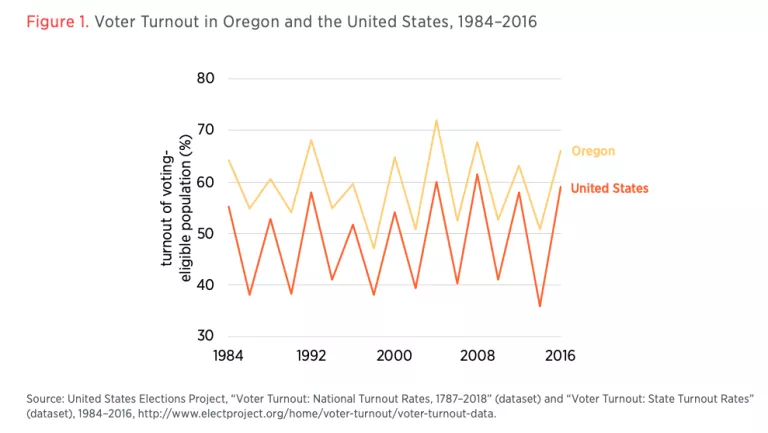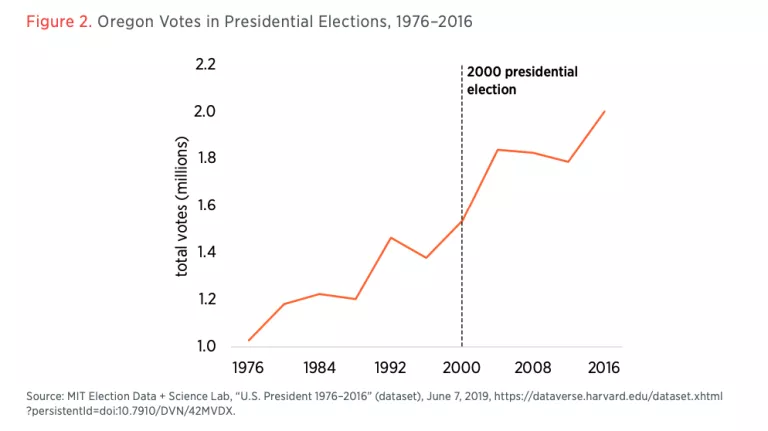Monday, March 16, was not a good example of what to do when it comes to elections in America. In the face of a pandemic, three states decided to proceed with their primary elections, which had been scheduled for the next day. A fourth state, Ohio, wisely postponed its primary after shambolic last-minute judicial and bureaucratic machinations.
While these primaries did involve several high-profile, hard-fought local and House races, the Democratic presidential primary had passed its high point, and there were no competitive Senate primaries. The United States will not be as fortunate come November.
The general election’s timing is set by statute. Nonetheless, it would be irresponsible to require people to vote in person in the midst of a pandemic. Dramatically lower turnout would inevitably distort the results. Postponing general elections is much more problematic than postponing primaries because self-serving considerations of incumbency and partisanship play a greater role. In addition, many states lack clear electoral emergency laws, and the courts rely instead on “vague, subjective, ad hoc standards in rushed, politically charged proceedings.”
States need to start planning immediately to facilitate voting by mail. The good news is that a number of states have relied on such voting for some time now. Oregon’s experience serves as useful guide for states with less experience. There are some drawbacks of voting by mail, including the possibility of coercion and fraud. But some of these risks can be mitigated. At present, the most directly relevant federal legislative initiative is the Natural Disaster and Emergency Ballot Act of 2020.
Voting by Mail in Oregon
Oregon represents the best large-scale, long-run, exclusive vote-by-mail system in the United States. The state established vote-by-mail as an exclusive system in 1998 with the passage of Ballot Measure 60, and it has used postal voting in presidential elections since 2000. Voting by mail is popular in Oregon, with 80 percent preferring it to in-person voting. Moreover, voter turnout in Oregon remains strong relative to the country and appears unaffected by the switch, as shown in figure 1. The trend in absolute numbers of votes cast does not show signs of a structural break either, as figure 2 illustrates. These data are consistent with academic studies on voting methods.


Other states have followed Oregon. In 2020, Colorado, Hawaii, Utah, and Washington were already set to join Oregon in conducting elections entirely by mail. All states allow voting by mail for absentee ballots, although 19 states currently require an excuse for the inability to vote in person. As the United States prepares for November, the states should be free to choose their own implementation methods and procedures, but relying on existing models may be wise given the available time.
Disadvantages of Voting by Mail
Voting by mail is not without drawbacks. First, a number of concerns fall into the broad category of voter fraud: impersonation, vote harvesting, and voter coercion.
One thorny issue that relates to all three of these concerns is whether an agent may return a ballot on someone’s behalf. This may be an important issue if some voters are incapacitated for health reasons. Twenty-four states allow voters to specify anyone to submit their vote, 12 specify a limited number of possible representatives (household members, caregivers, family members, etc.), and in 14 states the matter is unclear or the practice is prohibited. Several states bar those with suspect relationships, such as employers, union agents, candidates, or campaign workers, from acting as a representative, to reduce impersonation concerns. Some states also regulate the number of people a given person can represent, in order to prevent vote harvesting.
Oregon’s requirement of an optical character recognition match between the signature on a voter registration card and that on a mail-in ballot addresses impersonation concerns as such, but perhaps not concerns about coercion. One could go further than that and experiment with fingerprints, driver’s license numbers, or partial Social Security numbers, but privacy and identity-theft concerns would rapidly outweigh the reduction in the risk of agents voting against the voter’s will. As an example of what is perhaps not a secure way to go about this, the Netherlands asks overseas voters who wish to vote by mail to submit a copy of their passport or ID via email in order to register.
Voter coercion is also likely to be easier in the absence of in-person voting, as it is harder to guarantee ballot secrecy. There is no obvious way to prevent this, although a coerced voter can contact the authorities and report whatever illegal activity occurred.
In addition to ameliorating fraud concerns, in-person electronic voting equipment often prevents voters from making mistakes, such as choosing more than the maximum number of selections or skipping an election. These mistakes can be significant, with recent research pegging the share of votes for which the voter’s intention cannot be ascertained at 1.7 percent. Voting by mail may also be disproportionately difficult for populations without a fixed address. That said, paper ballots appear to perform better than other voting technologies, and it is not clear that voting by mail will lead to a greater proportion of uncounted votes once all factors are taken into account.
Furthermore, voting by mail may lead to delays in counting and reporting, especially if votes are counted as long as they are postmarked on Election Day. California’s experience suggests that delays may be significant and that the first ballots to be counted may not constitute a random sample. Precautions taken with returned ballots may induce additional delays. To set expectations, it is paramount that this possibility is communicated to voters well before Election Day.
Finally, there are significant costs and challenges associated with the initial establishment of a vote-by-mail system. States will need up-to-date addresses, tracking systems, and verification methods. The federal government should appropriate funds to deal with all of these issues. That said, studies have found that voting by mail is far cheaper than in-person alternatives.
While significant, the disadvantages of voting by mail are easily outweighed by the serious risk to the American system of government if in-person voting is the only method available during a renewed coronavirus outbreak.
Federal Legislation
The most significant piece of federal legislation related to expanding voting by mail is the Natural Disaster and Emergency Ballot Act sponsored by Senators Amy Klobuchar (D-MN) and Ron Wyden (D-OR). Their bill proposes a number of reforms. These include requiring states to offer absentee ballots without an excuse during the crisis, self-printing of absentee ballots, and expanded early voting. The proposal also includes a number of suggestions for minimizing the risk of infection associated with the voting process, such as eliminating lickable envelopes. Their proposal stops short, however, of building the infrastructure that would allow for a rapid transition to exclusive Oregon-style voting by mail.
While voting by mail involves tradeoffs, including budgetary ones and those related to federalism, the country is taking extraordinary steps to prevent contagion. It is incredibly difficult to predict what the United States will look like come November. Given the context, postal voting should be, if not the default option in the coming election, at least an option that Americans can rapidly pivot to.
Conclusion
To ensure the smooth functioning of the US electoral system this fall, it is important to start building a back-up infrastructure that can operate even in the midst of a resurgent pandemic. We have discussed some of the legal and logistical issues associated with such a shift, but preparing the electorate is also important. To ensure the November 2020 election’s legitimacy, not only should the federal government and the states prepare voters for the potential new logistics of voting, they should also be clear that counting the votes may take longer than usual.
About the Authors
Daniel Shoag is an associate professor at the Weatherhead School of Management at Case Western Reserve University. He was formerly an associate professor of public policy at Harvard Kennedy School and an affiliate of the Taubman Center for State and Local Government. His research focuses on state and local government finance, worker signaling and the hiring process, and regional and urban economics. Shoag’s research has been published in major academic journals and has been featured, among other outlets, in the New York Times, Bloomberg, the Washington Post, and the Wall Street Journal.
Stan Veuger is a resident scholar at the American Enterprise Institute (AEI), where he specializes in political economy and public finance. He is also the editor of AEI Economic Perspectives as well as a fellow at the IE School of Global and Public Affairs in Madrid and at Tilburg University in the Netherlands. His research has been published in leading academic and professional journals, including the Journal of Monetary Economics, the Quarterly Journal of Economics, and the Review of Economics and Statistics. He is the editor, with Michael Strain, of Economic Freedom and Human Flourishing: Perspectives from Political Philosophy (AEI Press, 2016).

